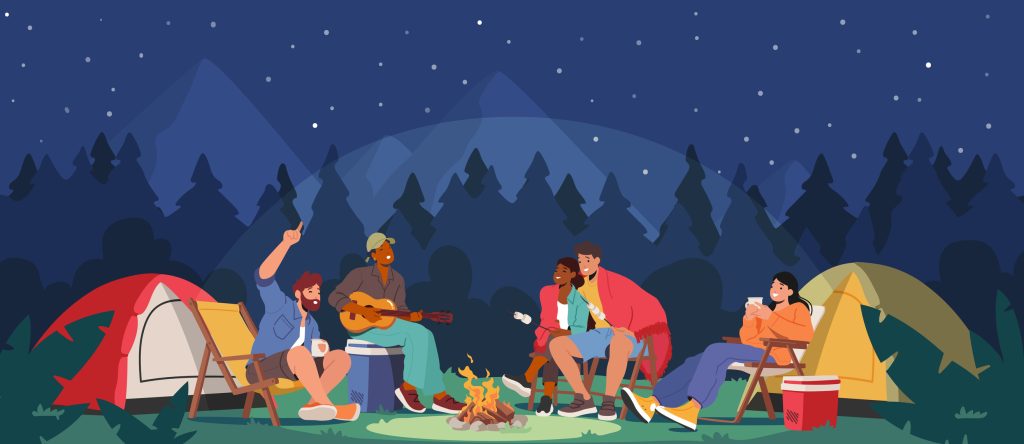The sun was shining, the virtual campfire was crackling, and participants were discussing new and complex challenges surrounding the future of open access (OA) publishing.
This past summer, CCC hosted “Camp OA,” a series of community forums in which publishers could dive deep into technology, publishing models, and workflows. Like the summer camps of our youth, it was time set aside for learning and development—while building meaningful relationships.
Here are four of the most memorable takeaways we heard:
Lost in the Woods: Compliance with Funder Mandates Poses Challenges
Our campers shared challenges related to complying with funder policies and OA mandates and discussed their impact on authors and publishers. Like hiking through unfamiliar woods without a map, campers noted that policies vary between funders, are ever-changing, and difficult to locate, let alone understand.
Campers expressed that most authors’ questions relate to copyright license selection and article processing charge (APC) funding. Authors want to comply with the funding requirements, but rely on their publishers to help them do so. Currently, most publishers have editorial staff or an OA support team handle these questions, but there is much debate on whose responsibility it is to ensure compliance.
2. Tug of War: Operationalizing Subscribe to Open (S2O)
In the tug of war between theory and practice, campers joined the Operationalizing Subscribe to Open (S2O) session to learn about this newer business model. In this framework, if subscription thresholds are met for applicable journals, the publisher commits to publishing that year’s journal content OA.
Campers discussed the opportunities of this model, and specifically how publishers are using established systems such as CCC’s RightsLink for Scientific Communications to help implement it. The American Society for Microbiology (ASM) shared its S2O strategy, which will begin in 2025.
The group also discussed practical S2O challenges including its impact on publication workflows, the complexity of grace periods, the occasional involvement of article fees, and the difficulty of annual changes in commitments.
3. Talent Show: A Renewed Focus on Author Services
Like campers who showcase their skills at an end-of-summer talent show, authors want to promote their research after publication.
Camp OA attendees discussed the opportunity to make this possible by offering author services including reprints, custom covers, infographics, and research promotion services. As publishing models shift, publishers are focusing on author experience and retention. Offering these services when the authors’ interest is piqued, as part of the post-acceptance workflow, enables new and expanded revenue streams.
The campers discussed the importance of integrating these services into their existing workflows to streamline the publication process while diversifying their offerings.
4. Handicrafts: Ongoing Affiliation Challenges
When braiding intricate friendship bracelets, campers can encounter a loose thread or a misplaced knot—and need to unravel the whole thing.
Similarly, our campers discussed the kinks in the publication lifecycle caused by the lack of author affiliation identifiers on a submitted manuscript. Inaccurate or missing data takes manual, time-consuming work to untangle—causing problems from informing the decision to go OA, to determining the proper license to publish under, to understanding where APC funds can come from.
Although a new, author-led solution to the affiliation challenges was presented in the camp session, publishers understandably expressed little appetite for introducing new steps in author-facing workflows. Campers agreed that the affiliation identifier problem is best solved at the onset of a submission and with enforced inclusion of persistent identifiers (PIDs) on as many articles as possible.
Looking Forward to Next Summer
Autumn and cooler weather is here, but we’re already looking forward to next summer. We received positive feedback from our campers, who loved the format of this webinar series and plan to attend again.
Our campers gave suggestions for topics to discuss around the campfire, but we’d love to hear more—please contact us to share your ideas. We hope to see you next year!

